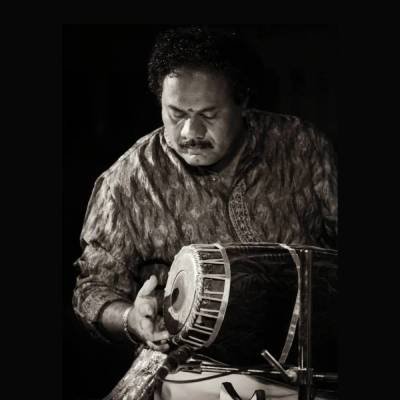Guitar- A Brief History
A guitar is a resonant vessel of harmony and soul where wood and strings converge to breathe life into melody. It is a fretted musical instrument that typically has 6 strings. It is played either by plucking or strumming the strings using one’s finger or a guitar pick. The guitar is a highly versatile instrument used extensively in various genres like rock, blues, jazz, country and many more. The western guitar or modern day guitar as we know it consists of a body, neck and a headstock with frets along the neck to produce different pitches when the strings are pressed down.
History of the Guitar
Ancient roots
- The guitar's predecessors include instruments like the lute from Europe, the oud from the Middle East, and similar stringed instruments from Asia.
- The oud, brought to Spain by the Moors around the 8th century, is often considered a significant ancestor of the modern guitar.
Renaissance and Baroque Guitars
- During the Renaissance (15th-17th centuries), the vihuela and early guitars with four or five courses of strings were popular in Spain and Italy.
- The modern tuning system started to take shape during this time.
Development of the 6 string Guitar
- By the late 18th century, the six-string guitar emerged in Spain, and this form eventually became standard.
- Famous luthiers like Antonio Torres (19th century) greatly influenced the design of the classical guitar, creating a larger and louder instrument that is closer to what we know today.
Electric Guitar and Modern innovations
- In the 1930s, the electric guitar was developed, revolutionising music and leading to the rise of new genres such as rock and roll.
- Les Paul and Leo Fender were pioneers in designing solid-body electric guitars, with the Gibson Les Paul and Fender Stratocaster becoming iconic instruments.
- The electric guitar became central to popular music from the mid-20th century onward, shaping the sound of blues, rock, jazz, metal, and other genres.

Different types of Guitars
Acoustic Guitar
- Produces sound acoustically through the vibration of its strings, amplified by the hollow body of the guitar.
| Guitar type | Attribute |
|---|---|
| Classical Guitar | Uses Nylon Strings, typically played with fingers, often used in western classical or flamenco style of music. |
| Steel stringed Acoustic Guitar | Uses steel strings, which produces a brighter louder sound and played using a guitar pick- used country, folk and pop music. |
Electric Guitar
| Guitar type | Attribute |
|---|---|
| Solid body Electric Guitar | No resonating body, relies on pickups and amplification ( ex- Fender, Stratocaster, Gibson, Les Paul etc) |
| Semi hollow Electric guitar | Has a resonating chamber, produces a mix of acoustic and electric sound (ex- Gibson,Es-355) |
Bass Guitar
- Usually has four strings (but can also have five or six), tuned an octave lower than a regular guitar, and is essential in providing the bass-line in various genres.
- Available in both electric and acoustic versions.
| Guitar type | Attribute |
|---|---|
| Electric Bass | Can be 4 or 5 or 6 or more stringed, played primarily with fingers, relies on pick up and amplification. (Ex- Fender, Ibanez, Cort etc) |
| Acoustic bass | Can be 4 or 5 stringed, played with pick or finger, relies on hollow resonating body and also amplification. |
Electro-Acoustic Guitar:
An acoustic guitar equipped with pickups, allowing it to be amplified like an electric guitar while retaining the acoustic sound.
Resonator Guitar:
A type of acoustic guitar that uses metal cones (resonators) in its body to amplify sound. Often used in blues and bluegrass music.
Twelve-String Guitar:
A guitar with six pairs of strings (12 in total), producing a richer, more resonant sound. Common in folk and rock music.
Archtop Guitar:
A steel-string guitar with a curved, arched top and a hollow body. Mostly used in jazz and blues.

Famous Guitarist of Western World
| Guitarist | Musicality | Genre/Style | Brief Description |
|---|---|---|---|
| Chet Atkins | Complex fingerpicking, smooth phrasing, and technical skill | Country, Country Jazz, Fingerstyle | Known as “Mr. Guitar,” Chet Atkins revolutionized the country genre with his sophisticated fingerpicking technique, blending country with jazz and pop to create a unique sound. |
| Merle Travis | Syncopated picking style known as “Travis Picking” | Country, Western Swing, Folk | Merle Travis popularized a fingerpicking technique that shaped country guitar playing, where alternating bass notes and melody lines are played simultaneously. |
| Doc Watson | Fast flatpicking, precise articulation | Bluegrass, Country, Folk | A master of flatpicking, Doc Watson brought virtuosity and clarity to bluegrass and folk music, inspiring generations of acoustic guitarists with his lightning-fast style. |
| Glen Campbell | Versatile player, combining melody with impeccable technique | Country, Pop, Folk Rock | A crossover artist, Glen Campbell blended country and pop styles with his virtuosic guitar playing and smooth vocals, becoming a major influence in both genres. |
| Roy Rogers | Expressive slide guitar and cowboy-style playing | Western, Country Blues, Slide Guitar | A pioneer of slide guitar in Western music, Roy Rogers’ emotive playing and cowboy songs made him one of the defining guitarists of the Western music genre. |
| Jerry Reed | Highly rhythmic and percussive playing, complex techniques | Country, Bluegrass, Rockabilly | Known for his energetic and syncopated playing style, Jerry Reed brought an innovative percussive sound to country music, excelling as both a player and a songwriter. |
| James Burton | Sharp “chicken pickin’” style | Rockabilly, Country, Rock ‘n’ Roll | James Burton’s “chicken pickin’” technique made him a defining figure in country and rock music, contributing to Elvis Presley’s and Ricky Nelson’s iconic sounds. |
| Willie Nelson | Laid-back, smooth phrasing, and distinctive acoustic tone | Outlaw Country, Folk, Blues | Willie Nelson’s unique phrasing and playing style on his iconic guitar, “Trigger,” combined traditional country with jazz-like improvisation, defining the outlaw country movement. |
| Bob Wills | Western swing rhythms, innovative chord progressions | Western Swing, Jazz, Country | Bob Wills, often referred to as the "King of Western Swing," brought jazz influences and sophisticated chord progressions into country, forever changing the genre’s landscape. |
| Buck Owens | Bright, crisp Telecaster tone with driving rhythm | Bakersfield Sound, Country, Honky-Tonk | Buck Owens was the leader of the Bakersfield sound, characterized by a sharp, bright Telecaster tone and a focus on upbeat rhythms, steering country away from its Nashville roots. |
| Jimi Hendrix | Stylish handling and playing Rock and smooth rock in Guitar- stage presence | Rock | Known for his revolutionary approach to electric guitar and innovative techniques, he is often regarded as one of the greatest guitarists in rock history. |
| Eric Clapton | Soul-stirring blues, unique chords | Blues and Rock | A master of blues and rock guitar, Clapton's emotive playing and songwriting have influenced countless musicians. |
| Jimmy Page | Iconic riffs and technique | Rock, Metal | The Led Zeppelin guitarist is celebrated for his iconic riffs and contributions to hard rock and heavy metal. |
| B.B. King | Expressive playing and bending/vibrato | Jazz | A legendary blues guitarist known for his expressive string bending and vibrato, King helped shape the genre and inspire generations of musicians. |
| Slash | Unique sound, and playing technique | Rock | The Guns N' Roses guitarist is famous for his signature sound and style, contributing to some of rock's most memorable tracks. |
| Steve Vai | Unique technique and experimenting with sound | Rock, Metal | A virtuoso guitarist and composer, Vai's technical prowess and creativity have pushed the boundaries of guitar playing in rock and instrumental music. |
| Carlos Santana | Unique melodic style of playing | Blues, Jazz, Fusion, Rock | Known for his unique fusion of rock and Latin music, Santana’s melodic style and virtuosic playing have made him a global icon. |
Famous guitarists in Western Genre in India
| Guitarist | Musicality | Genre/Style | Brief Description |
|---|---|---|---|
| Prasanna Ramasamy (Guitar Prasanna) | Blending Carnatic classical music with rock and jazz, often playing intricate ragas on the electric guitar | Carnatic, Jazz fusion | Prasanna is widely appreciated for his fusion of traditional Indian music with Western genres. |
| Ehsaan Noorani | Renowned Indian guitarist and composer, part of the music trio Shankar-Ehsaan-Loy | Rock, Pop, Bollywood | Ehsaan blends Western rock, blues, and jazz influences with Indian music, shaping modern Bollywood soundtracks. |
| Baiju Dharmajan | Integrates Carnatic music with hard rock and metal | Carnatic Rock, Metal | Known as the "God of Carnatic Rock," Baiju was formerly part of the progressive metal band Motherjane. |
| Rex Vijayan | Blends Indian folk music with rock and electronic elements | Indian Rock, Folk, Fusion | Rex is a key member of the popular Indian indie band Avial. |
| Rudy Wallang | One of the leading figures in India’s blues scene | Blues, Rock | Rudy is the guitarist for the Shillong-based band Soulmate, considered one of India's best blues bands. |
| Raghu Dixit | Blends Indian folk with contemporary rock | Folk, Rock | Raghu's band, The Raghu Dixit Project, has performed at international music festivals. |
| Shylu Ravindran | Versatile South Indian guitarist known for his work in Carnatic fusion and contemporary styles | Carnatic Fusion, Rock, World Fusion | Shylu is celebrated for blending traditional Indian music with Western influences. He is also a prominent guitar faculty at Bmusician, mentoring many students. |
Final Thoughts
Owing to such a rich history and progress over periods of time – evolving and adapting, the guitar/ Western guitar has been a major sought out instrument to be learnt online and offline. Best western classical guitar courses have sprung up via online schools and offline line schools, thereby propagating the growth and progress of the instrument.


















